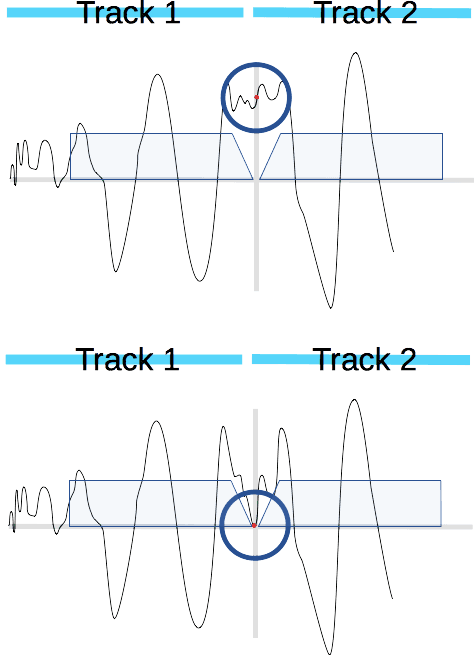
Continuation of the article about click matter into DSF and PCM (FLAC, WAV, AIFF, etc.) files after ISO extraction.

If you buy "AuI ConverteR PROduce-RD" (2023/12.x version) from 24 August 2023 to 24 October 2023, you will get free update to version 2024 (13.x) after its release.
3. Album is live concert, opera, sympony, spectacle etc.
Sor such type of albums initially continuous audio stream is separated into several tracks.
Non-zero levels at borders of tracks is main matter here.
As example, audio player can re-initialize output audio device (digital audio converter, DAC) for each track. Clicks at track borders are possible for such playback of this album type.
Audio player should playback such album as continuous stream:
- without re-initializing DAC and
- nothing inserting between neighbouring tracks.
Such playback mode called as gapless.
But if we convert ISO to PCM (FLAC, WAV, etc.) ot extract ISO to DSF with resampling (DSF's sample rate other than ISO stuff's one), audio converter in traditional mode will convert audio tracks independently: for each track reasmpler will re-initialized.
So at track borders will appear transien processes.
If we merge two neighbouring tracks we can view splash at border.
For resampling of operas, live concerts and other similar albums recommended use gapless mode conversion.
Other cases
Also may be others cases:
1. Audio player haven't gapless mode.
2. Need playback tracks of opera separatelly or in other order.
In these cases track border clicks may be caused.
For avoiding clicks we can made zero values at borders via fade in/out and begin/end of each track via applying SmoothDC processing.
Thus SmoothDC processed files will have zeroes at borders. In addition to zero level at border, SmoothCD (with special form of fade in/out) makes tansient between tracks smoother than linear fading.


